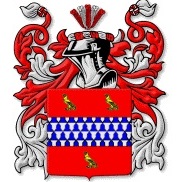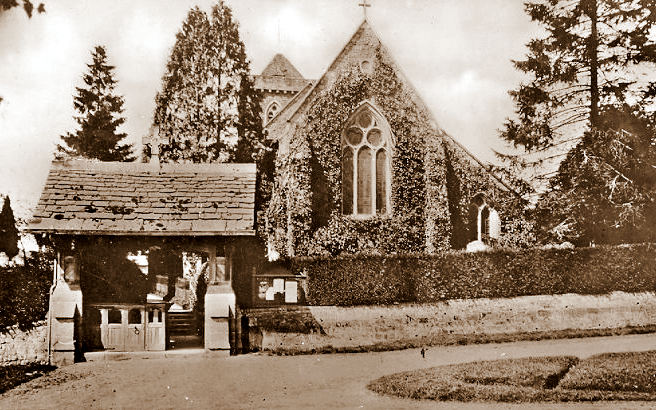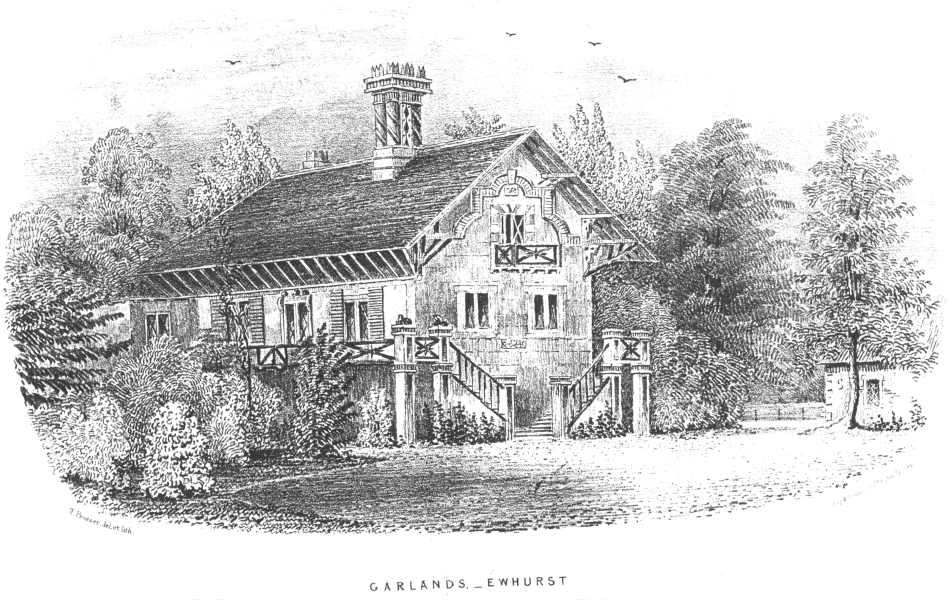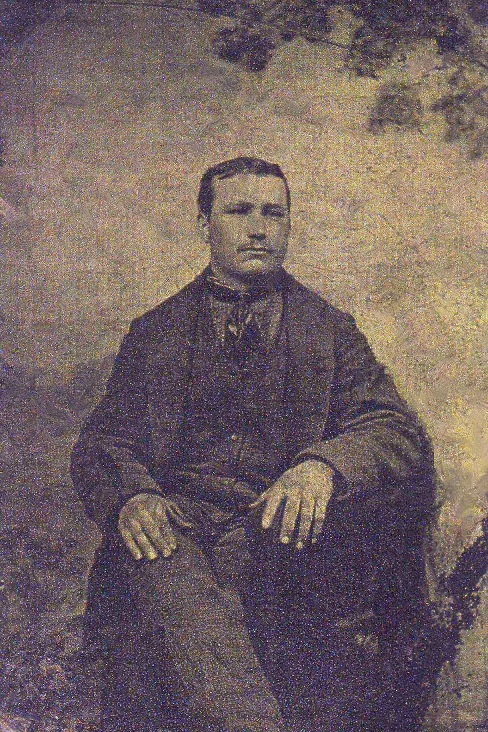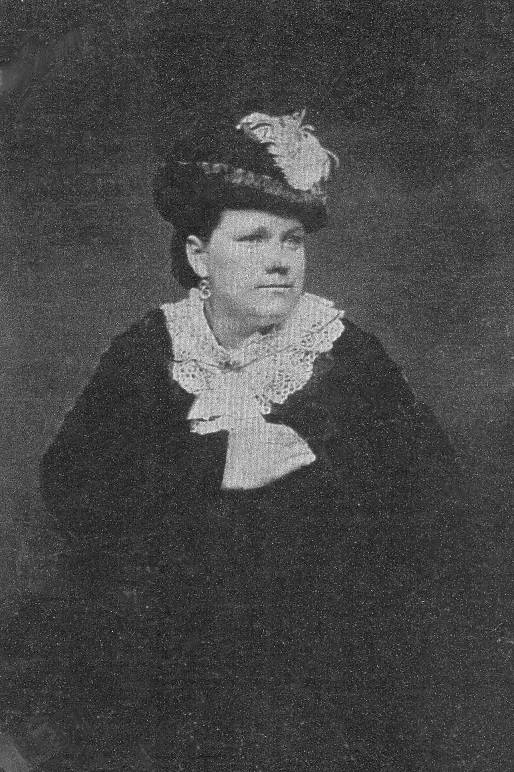Google Books - The Norman people and their existing descendants in the British dominions ...Furlonger, from Valancre. Warin de Valle-Ancre was of Normandy 1195 (MRS). The name appears in England c. 1272 as Varencher, then Wallenger, then as Fullanger, or Furlonger.
1889. STAMFORD STREET AND CHARING CROSS. Valenger, or Valancre. " Warin de Valle-Ancre was of Normandy, 1195 (Magn. Rotul. Scaccariae Normanniae). The name appears in England about 1272 as Varencher, then as Wallanger, then as Fullanger, or Furlonger." — The Nor-man People. The arms of the Wallengers or Wellengers, of Whitchurch in Bedfordshire, and Chelmsford in Essex, are preserved by Robson. They bore Gules a fesse vair between three falcons Or. But in neither county can I find any account of the family.
Another interpretation of the Furlonger name: FURLONGER. A furlong, A-Sax. furlang. is a division of a common or tenantry field. It may have been the duty of the "Furlonger" to attend to the boundaries of such divisions.
For many years it was thought that my Dublin born grandfather, Felix Furlonger, was only six months old when his father, Felix senior, died. In fact Felix Minn Furlonger died three days before his son Felix Ernest Walter Furlonger was born. It was long thought that Felix junior was sent to England to be educated in the Colchester Army School while his mother remarried and remained in Ireland. Recent research (2012) has revealed that the widow Mary (Cooper) Furlonger quickly remarried and to someone who may have been a family acquaintance as he was a member of the Army Service Corps, the same as Felix senior. His name was Samuel Conn, also a butcher and an Englishman from Essex County. Samuel and Mary had a son "Ben" born to them in Dublin after which they moved to Aldershot, Hampshire and then to Colchester where it appears that Sam completed his military service before the family returned to Ireland, showing up in the 1901 census of Belfast, Sam working as a butcher. By this time there were more siblings for Felix who was then going by the name of Felix Conn, a name which he continued to use into 1907 until he won the Belfast to Lurgan "go-as-you-please" marathon race where he is recorded as Felix Furlonger, his correct legal name, which he continued to use thereafter. My mother and grandmother talked of the Furlongers as "having money" and "owning houses and land", and that Felix senior "was a British soldier". The Furlongers were also known to be butchers and to have come from Haslemere in Surrey, England.
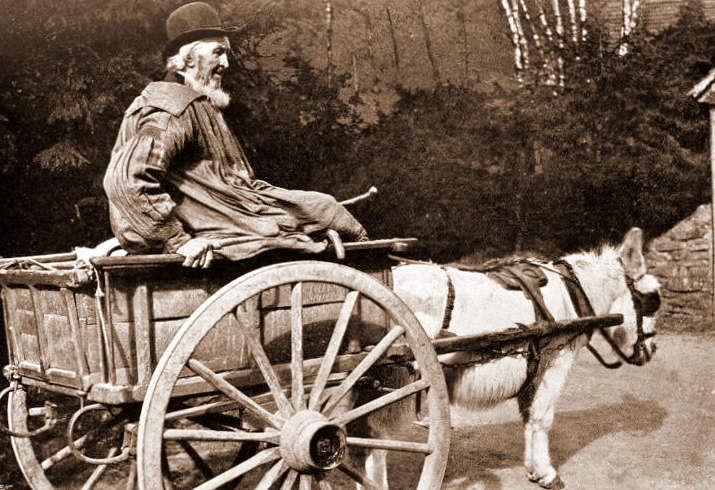
From the Chiddingfold area this is a photo of a James Furlonger c. 1910.
Research has revealed that the Furlongers came firstly from the parish of Chiddingfold in Surrey and that our family branches remained in Chiddingfold and nearby Haslemere for several centuries owning farms, houses and businesses up until the 1940's when they seem to have disappeared from the area. Haslemere was, at one time, a part of Chiddingfold parish before gaining separate status as we know it today. The earliest reference in our Furlonger tree is to Robert Furlonger of Chiddingfold who died in 1562. I have also discovered the 1652 will of William Furlonger, of Chiddingfold, who appears to be my 10th great grandfather.
The Furlongers were buried in the graveyard of St. Mary's church in Chiddingfold. Across the street from the church is the Crown Inn, which in itself has quite a history, being possibly the oldest Inn of its kind in England. At one point in time it appears to have been owned by William Furlonger who may also have had a butcher's shop nearby.
The Furlonger name seems to be centred in the Surrey area of England with occurrences elsewhere. There appears to be an early connection to Australia, possibly distantly related, with another through my Uncle Billy (William) who emigrated to Australia after WWll. There are also Furlongers in Canada and the U.S.A. but only one, in Canada, is so far known to be related.

Chiddingfold area farms once owned by my Furlonger ancestors.
Census records show a William Furlonger owning an 85 acre farm on the outskirts of Chiddingfold. The farm changed names several times prior to William's ownership but in his time it became known as Lakehouse Farm and the house and name exist to this day. I have records of three more Furlonger farms in the immediate vicinity of Haslemere and Chiddingfold. They still exist under their original names but with different ownership. They are known as Tugley Farm, Fisher Lane Farm and West End Farm.

and at some point in time relocated to Liphook, Surrey where he established his own business. The photograph c.1900 above shows William, his wife Sarah and their four children. William's brother Walter moved to Haslemere where he also operated a butcher's shop. Records show that Walter and relatives owned a number of houses in Haslemere and that in the early 1900s they owned a garage and sold and rented out vehicles, Vauxhall being one brand name mentioned. Walter is mentioned as being an avid cricket player and also as having had disputes with his next door neighbour, a Mr. Berry, which had to be resolved in court.
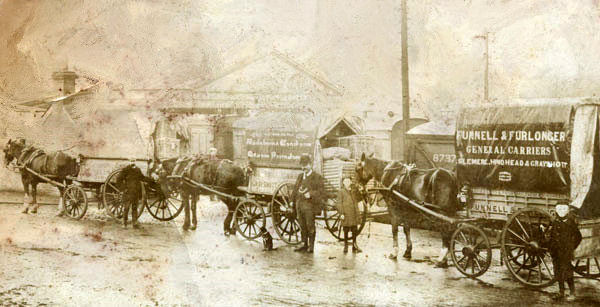
"The former residence of Bet Simmonds was 'Ash Villa' in Headley Road and from
Directories for the day list several Furlongers living in Haslemere as well as this business. Walter married Jane Flint from Ewhurst, Surrey. Jane's father owned a farm just on the northern outskirts of Ewhurst, known as Malquods or Malquoits Farm on which land there now stands an insurance agency. For a while Jane worked as a servant at "Garlands", a Ewhurst home with an interesting history. It still stands today but has been added to and changed over the years, however, the original structure can still be seen incorporated into the larger house. I had the pleasure of having afternoon tea with the current owner in 2005 and was given a brief tour of the property. Jane's brother is recorded as residing or working at a local Ewhurst tavern.
On the wall of the old jail house in Haslemere is a plaque commemorating the local Police Inspector who was bludgeoned to death right outside Walter's butcher shop which was across the street from the White Horse Inn where a disturbance had begun when the Inspector tried to evict customers for drinking after hours. Walter's intervention probably saved the life of the inspectors friend who was also under attack by the drunken mob of "Navvies". Felix Minn Furlonger, a British soldier, was Walter's son. Several of Walter's extended family ended up fighting in WWl and one of whom, upon leaving the army, enlisted with the Royal Irish Constabulary and was posted to the west coast of Ireland. Felix Minn, while in the Army Service Corps, was posted to Dublin, Ireland where he met and married his wife Mary Cooper who gave him two children. The first, Amelia Florence, died within three months of birth. Mary was born in Dublin and records show several generations of her family living there. Mary's father was a tailor who lived on Summerhill Road near what today is known as Croke Park. Mary gave birth to a son, Felix E. W. Furlonger during the period of a cholera epidemic which was nearing its end. Felix senior died of cholera and is believed to be buried in an unidentified mass grave on army property somewhere in Dublin. This is yet to be confirmed. My mother believed that the Furlonger family in Haslemere sent a church minister to Ireland to claim the body and return it to England, however we have been unable to verify this or to find a grave site in England. It was common practice in the day to bury cholera victims in mass graves in an attempt to limit the spread of the disease.
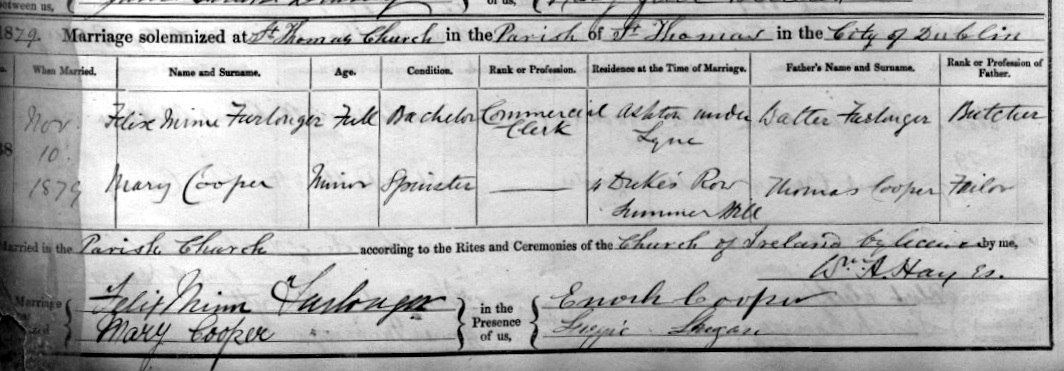
10 Nov, 1879. Church wedding.
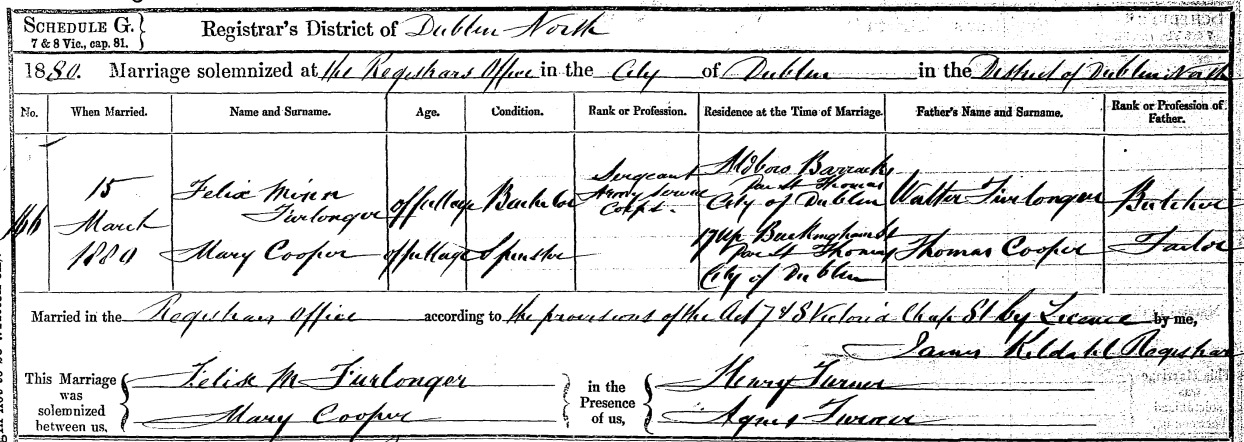
15 Mar, 1880. Registry Office wedding. Note that all of the writing is by the same hand.

17 Aug. 1880

8 Sep. 1880

2 Nov. 1880

Numbers 18 (nearest) and 19 Bayview (adjacent) where Mary and her

Birth of Felix junior

Death of Felix Minn Furlonger


Marriage of Samuel Conn to the widow Mary (Cooper) Furlonger.

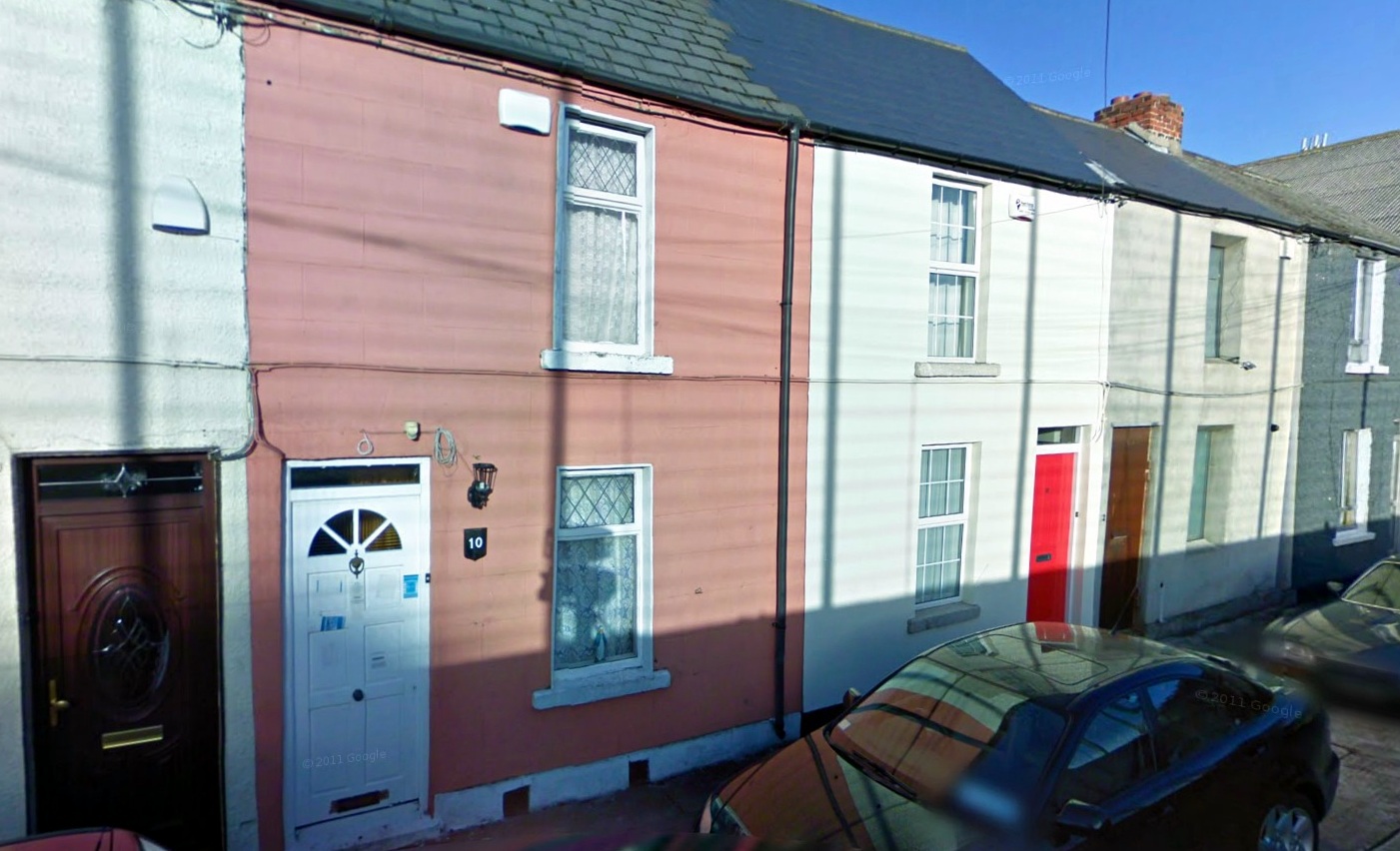
home of his half brother Felix E. W. Furlonger. They had two children, Amelia and Felix. Amelia died within a few months of birth. Felix Sr. died one month after Felix Jr. was born and Mary appears to have married Samuel Conn six months later, had a child, Benjamin, with him then the family moved to England for a while before returning to Ireland and settling in Belfast. Mary had a total of four children with Samuel Conn, that we know of, two of whom were born in England.

A 1920's photo of Ferguson's Butchers in Belfast. Felix Furlonger can be seen in
the right rear wearing
Felix followed in his family footsteps by becoming a butcher, a trade which he held all of his life while also dabbling in other endeavours along the way. His half-brother Ben was apparently an accomplished athlete which seems to have been the incentive for Felix to enter the Belfast to Lurgan "Go-as-you-please" in 1907 after which he married in 1908, became a father in 1909 and then appears to have quit his athletic endeavours. Prior to the six counties of the north, now known as "Northern Ireland", being separated from the remaing 26 a referendum was held which resulted in the signing of the "Ulster Covenant". Felix, along with other family members, is known to have signed this document which resulted in the separation of Ireland. Those signing the covenant wanted to stay in Ireland but to remain British. Many families were separated in the process, mine included. My mother recalled her mother shedding tears over the outcome. Felix Jr. married Annie Simpson and they had nine children, one of whom died in infancy. Two emigrated to Canada and one to Australia while the rest stayed in Ireland.
Annie's ancestors are supposedly related to the Brownlow Family of Lurgan, through an illegitimate birth, and thereby to Royal connections all the way back to the Kings of Scotland, as may be seen in the following video. According to my grandmother, Lord Lurgan's (Brownlow) daughter ran off with the footman while other family members say he was a Captain of the Guard, and from there we descend. My recollection, from my mother, is that it was Lord O'Neill, possibly through the name Hogg, but in any event the two Lords are connected so the family tree may end up the same anyway. I have been unable to find the connection but know that Simpson is a name connected to the Brownlow family. If we are connected then it would be to the Stewart line of Scotland somewhere prior to Mary Queen of Scots. 
|
